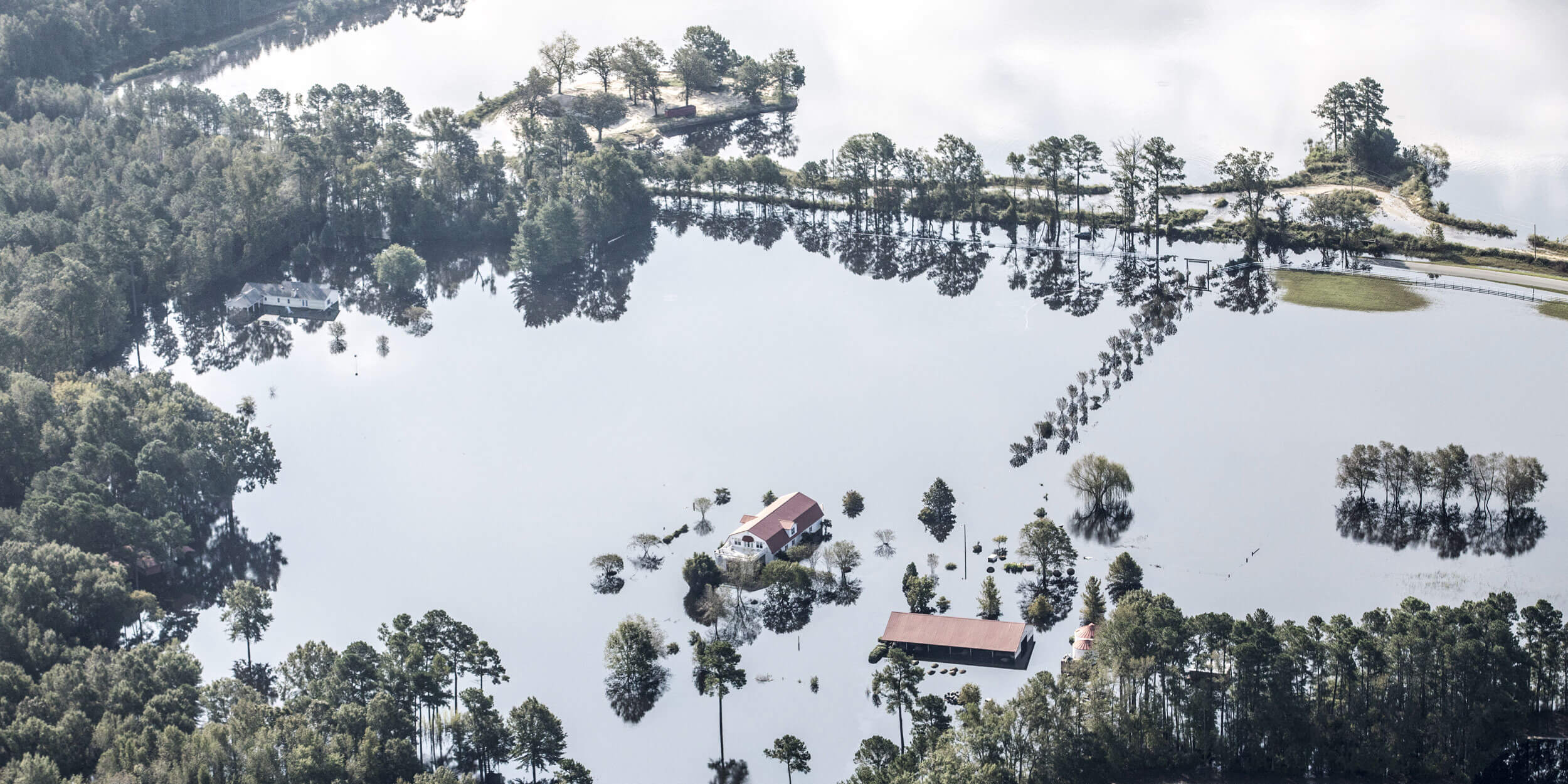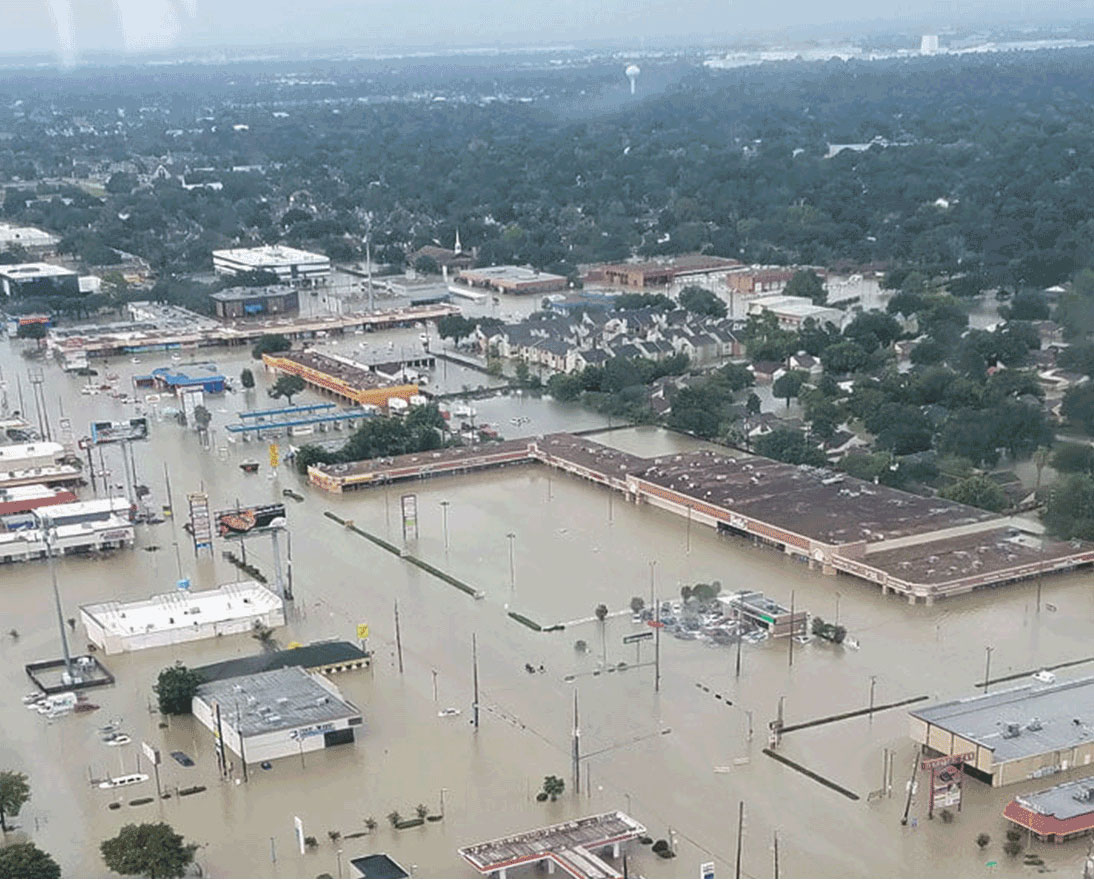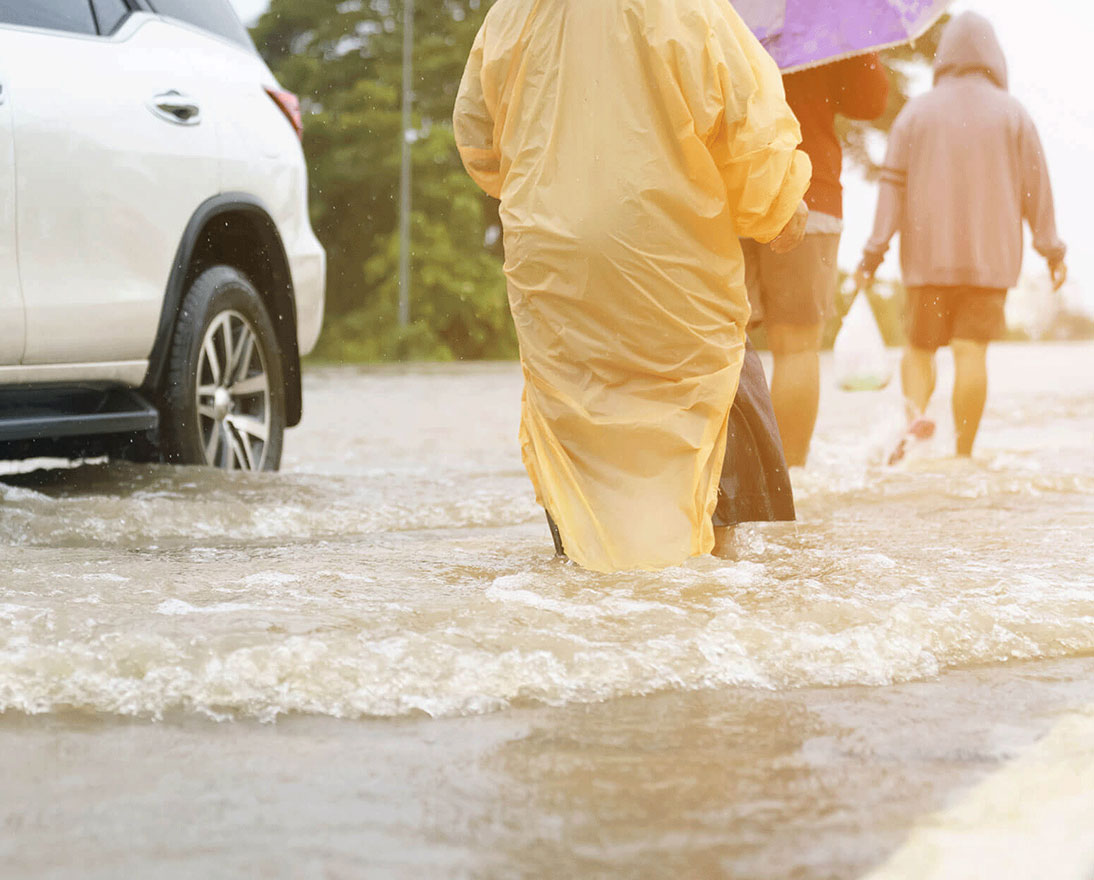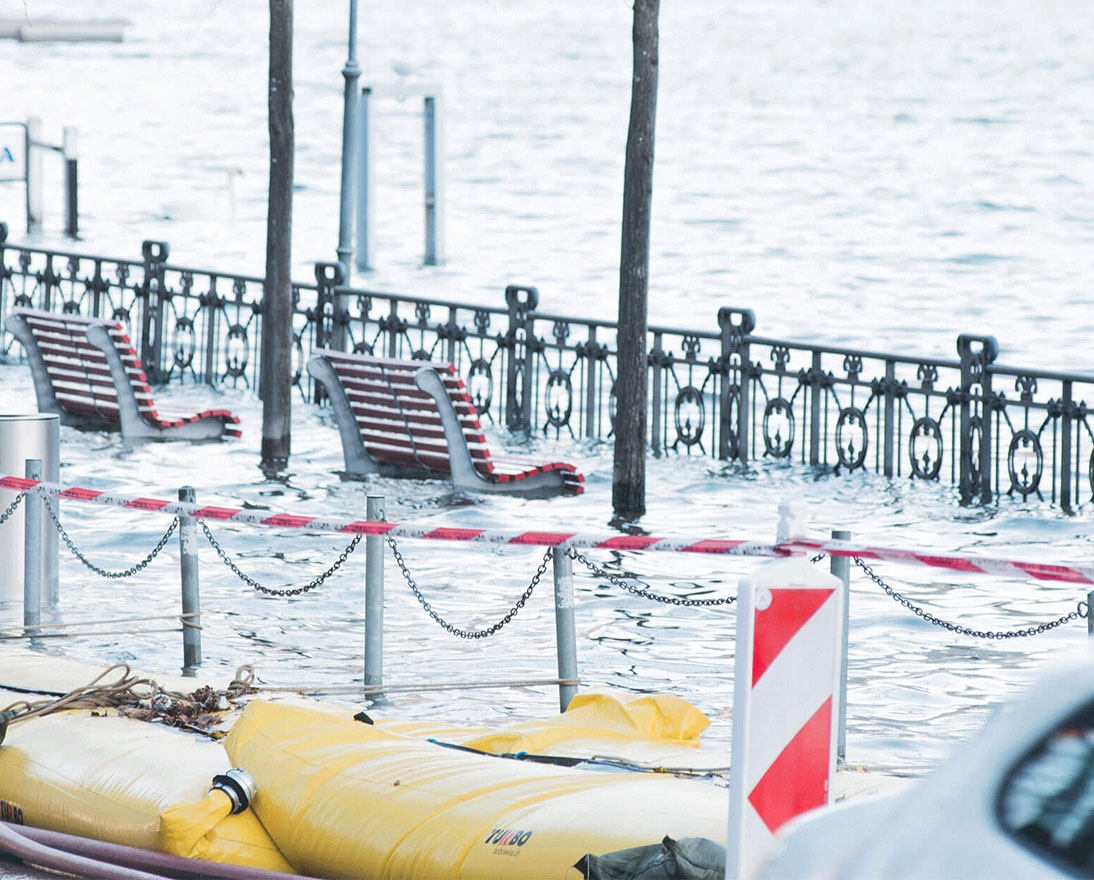Hurricane Florence’s Hard Rain Offers Hard Lessons in Resilience
Natural hazardsArticleMay 21, 20197 min read
Hurricane Florence brought devastating floods, but when the waters receded there were valuable lessons for businesses to heed.
Extreme weather events often prove the truth in Oscar Wilde’s aphorism that experience is the hardest teacher because it gives the exam first and the lesson afterward.
That was the case with Hurricane Florence, which made landfall in North Carolina as a category 1 hurricane on Sept. 14, 2018. The wettest tropical storm to hit the Carolina, Florence brought 35 inches of rain and its slow progression inland led to 51 deaths and catastrophic floods that battered infrastructure, and closed major interstate highways and more than 1,100 roads. The state’s Office of Budget and Management estimated damage at $17 billion, less than a third of which was covered by insurance.
But even before the floodwaters receded, Florence was revealing what had been learned from previous hurricanes—Matthew in 2016 and Floyd in 1999—and exposing what had not. The result is a useful tutorial for government and business leaders.
Flooding impacts more people globally than other natural hazards—about 250 million annually—so the Post Event Review Capability (PERC), a forensic reporting methodology, was developed in 2013 to fill a learning gap as communities scramble to recover from disasters.
“After a disaster there is rarely the time to learn what happened and what could be done better in the future. However, the recovery period is also a key window of opportunity to take action to reduce future risk,” according to Hurricane Florence: Building Resilience for the New Normal, Zurich’s PERC report on the disaster in collaboration with ISET-International.
Michael Szoenyi, Flood Resilience Program Lead at Zurich Insurance Group, is one of the authors of the report. He says the underlying message of the PERC reports is simple: Floods are natural, but it is not natural that they turn into disasters.
“We have a choice where we build, how we build, and how we choose to act in the face of natural hazards,” Szoenyi says.
Hurricane Matthew in 2016 prompted changes across North Carolina state government in terms of interagency coordination, the staging of key resources and an increased awareness of the need to prepare for recovery prior to an event happening. For example, the Food Bank of Central & Eastern North Carolina prepared branches not only on the coast but statewide in anticipation of inland flooding from Florence. That proved vital for the 500,000 customers who lost power for several days during Florence and the 15,000 people who sought emergency shelter. That level of preparedness did not precede Hurricane Matthew.
Business leaders need to underline that avoided losses are benefits.
- PERC report on Hurricane Florence
But not every harsh lesson led to positive change. Hurricanes Floyd, Matthew and Florence all saw documented environmental catastrophes due to waste from coal ash dumps and factory-scale hog farms across North Carolina, but political response and regulatory change and enforcement have been limited. The cost of inaction was laid bare by Florence.
“Business leaders need to underline that avoided losses are benefits,” the Florence PERC report concludes. “Not investing in protection is not free but carries the cost of future losses and missed opportunities.”
The first step to minimizing those losses is to lose the complacency. Each extreme weather event has particular characteristics but also common threads, one of which is a tendency for those in positions of responsibility to consider the event rare rather than predictable. Hurricane Florence was no different.
“We have found everywhere that people have to believe this particular disaster was really exceptional and therefore attribute it as having a very unlikely reoccurrence,” says Szoenyi. “Then it happens again two or three years down the road, but a past event doesn't say anything about the potential for a future event. That shouldn't distract you from taking action to protect yourself.”
Protection pays off. A National Institute of Building Sciences study found that investing in flood resilience returns between $5 and $8 for every $1 spent.
“It is cheaper to prevent than to pay losses, as our own research indicates, where we find that on average, $1 invested in resilience building saves on average $5 in future losses” Szoenyi says.
Hurricane Florence’s Lessons
- Communicating hurricane strength using the Saffir Simpson wind scale does not necessarily explain how devastating a hurricane-induced flood can be.
- Repeat recovery from back-to-back hurricanes can trap people and communities in a loop where they have not yet recovered from the first event when the next event already hits, such as Hurricane Matthew and Florence in North Carolina
- Insurance continues to play an important stepping stone to resilience and is a key element to swift and pre-planned recovery and re-instatement.
- It will become increasingly expensive to invest without adequate protection in high-hazard locations such as exposed storm fronts or similar locations.
- Planning ahead and implementing a comprehensive resilience strategy for a community, business or agency is important and should include planning for the worst possible, not necessarily the statistically, historical event that was experienced. As one witness in Florence said: "Think about impacts never seen before – and then plan for worse."
But marshaling public sentiment behind the challenging decisions necessary to effectively invest in prevention isn’t easy, even in the aftermath of a disaster.
“There is still little public appetite for widespread, decisive action,” the PERC report on Hurricane Florence says. “Unfortunately, it may take another Florence before people are willing to voluntarily make difficult decisions.”
Resilience means that you are able to pursue your objectives and achieve what you want in the face of the risks that are out there.
- Michael Szoenyi, Flood Resilience Program Lead, Zurich Insurance Group
That’s unfortunate because the forensic examination of Hurricane Florence shows that increased frequency and intensity of extreme weather events need not predetermine their impacts, and that both the public and private sectors will benefiting from responding to the macro challenges presented by climate change.
“Prevention is often neither complicated nor prohibitively costly,” Szoenyi says. “Resilience means that you are able to pursue your objectives and achieve what you want in the face of the risks that are out there. There are a lot of options to protect from risk and to avoid losses.”
The findings of the study illustrate how scenario planning can mitigate risk, and how apathy and inaction can exacerbate losses. While climate change often imperils supply chains, it can also alter consumer behavior, cautions John Scott, Head of Sustainability Risk at Zurich.
“Even if you’re delivering services and not products, you can be impacted,” he says “It’s pervasive through the economy. It’s just not as simple as flooding here or a windstorm there.”
That scenario planning must be forward-looking and not grounded in past experience, focused on the worst outcome imaginable rather than calculated from a baseline of historical norms or statistical likelihoods.
“So not just thinking of today but thinking five years ahead or 30 years ahead,” Scott says. “If you’re building a new facility you want to think through how the physical perils of climate change are likely to affect that facility in the future and adapt to that.”




